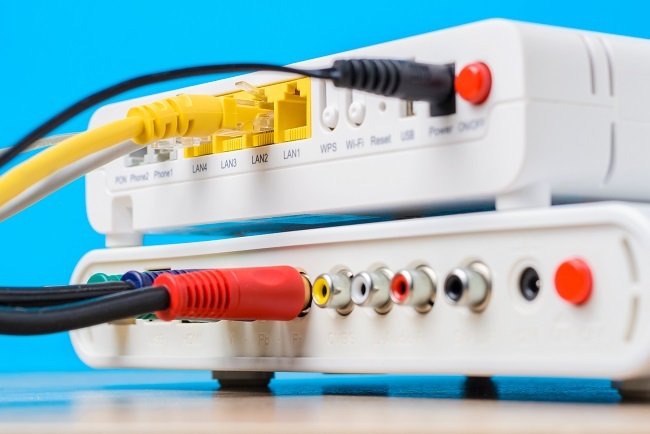
 Data Structure
Data Structure Networking
Networking RDBMS
RDBMS Operating System
Operating System Java
Java MS Excel
MS Excel iOS
iOS HTML
HTML CSS
CSS Android
Android Python
Python C Programming
C Programming C++
C++ C#
C# MongoDB
MongoDB MySQL
MySQL Javascript
Javascript PHP
PHP
- Selected Reading
- UPSC IAS Exams Notes
- Developer's Best Practices
- Questions and Answers
- Effective Resume Writing
- HR Interview Questions
- Computer Glossary
- Who is Who
What is the full form of FLR?
Introduction
Frame Loss Ratio (FLR) is a statistic used in telecommunications and computer networking to measure the percentage of data frames or packets lost during transmission between two places.

Network administrators may evaluate network performance, spot possible problems, and take the necessary action to lower FLR and guarantee the provision of high-quality services by monitoring and measuring FLR. FLR is a crucial performance statistic for evaluating network connection quality and spotting any problems that might compromise the dependability of data transfer. A high FLR may be a sign of equipment issues, network congestion, or other issues that may need to be fixed in order to enhance network performance.
Calculation of FLR
The number of frames transferred and the number of frames lost during transmission must be known in order to calculate the Frame Loss Ratio (FLR) for a transmission.
The FLR is calculated using the following formula
$\mathrm{FLR\:=\:\lgroup\:Number\:of\:lost\:frames\:\div\:Total\:number\:of\:frames\:transmitted\:\rgroup\times\:100\%}$
Example 1
Suppose you sent out 1000 frames, and 10 of those frames were lost in the process. You would use the following formula to calculate the FLR
$\mathrm{FLR\:=\:\lgroup\:100\:\div\:5000\:\rgroup\times\:100\%\:=2\%}$
Thus, this transmission's FLR was 1%, which indicates that 1% of the frames were lost in transmission.
Example 2
Let's say a different network sent out 5,000 frames, but 100 of them were lost in the process. We would apply the following formula to calculate the FLR
$\mathrm{FLR\:=\:\lgroup\:10\:\div\:1000\:\rgroup\times\:100\%\:=1\%}$
Therefore, the FLR for this transmission is 2%.
To provide a more precise assessment of the network's performance, FLR is often evaluated for a set time period, such as one minute or one hour.
Importance of FLR
A crucial statistic for evaluating the effectiveness of real-time communication via networks like VoIP (Voice over Internet Protocol) and video conferencing is frame loss ratio. It speaks of the proportion of frames lost during transmission.
Various factors, including network congestion, packet drops, and hardware/software problems, can cause frame loss. Communication quality can noticeably suffer with a high frame loss ratio, which can result in problems including audio/video distortion, jitter, and delay.

In order to make sure that the communication is of a satisfactory calibre, it is necessary to assess and monitor the frame loss ratio. As a result, the network and/or equipment may be improved while also determining the primary reason for frame loss.
As a key performance indicator (KPI) for service level agreements (SLAs) between service providers and their clients, frame loss ratio is also frequently employed. To guarantee customer satisfaction, service providers must make sure they achieve or surpass the maximum permitted frame loss ratio specified in SLAs.
Overall, frame loss ratio is a crucial indicator for determining the effectiveness of real- time communication over networks and is crucial for upholding client happiness and fulfilling service level agreements.
FLR in Network Performance Evaluation
A crucial indicator for assessing network performance is the frame loss ratio (FLR). It speaks about the proportion of frames or packets that are dropped during network transmission. Congestion, network issues, and equipment failures are only a few of the causes of frame or packet loss.
The FLR must be measured and monitored in order to evaluate the performance quality of the network. High FLR may be a sign of network congestion, packet loss, or other problems that might affect the quality of service (QoS). In real-time applications like VoIP and video conferencing, a high FLR can cause observable issues like audio or visual distortion, delays, and disruptions.
Network administrators may need to put in place a number of steps, such as boosting bandwidth, adjusting QoS settings, and locating and repairing network problems, in order to enhance network performance and decrease FLR. Analysing the FLR over time might help administrator's spot trends and patterns that can guide choices concerning network upgrades.
Network managers must make sure that FLR is measured and monitored often to guarantee the delivery of high-quality services since it is a crucial indicator for assessing network performance, particularly in real-time applications.
Conclusion
In conclusion, In real-time applications like VoIP and video conferencing, frame loss ratio (FLR) is a crucial measure for assessing network performance. Frame or packet loss can be caused by a number of things, including equipment faults, network congestion, and human mistake. Communication quality can suffer significantly with a high FLR, leading to problems like audio or video distortion, delay, and interruption. In order to evaluate the calibre of network performance, spot possible problems, and implement effective FLR reduction solutions, measuring and monitoring FLR is crucial.
Network administrators must make sure they achieve or surpass the maximum permissible FLR stipulated in SLAs since FLR is also used as a key performance indicator (KPI) in service level agreements (SLAs) between service providers and consumers. Network administrators may assure the delivery of high-quality services, resulting in customer satisfaction and company success, by monitoring FLR and putting measures in place including boosting bandwidth, adjusting QoS settings, and discovering and repairing network faults.
FAQs
Q 1: What does networking frame loss ratio mean?
The percentage of frames or packets lost during network transmission is referred to as the "frame loss ratio" in networking.
Q 2: How can network managers lower the frame loss ratio?
To lower the frame loss ratio, network managers may need to take a number of steps, including boosting bandwidth, adjusting QoS settings, and locating and repairing network faults.
Q 3: Are there any other metrics used in evaluating network performance?
Yes, In addition to these measurements, throughput, jitter, and latency are also used to assess network performance.

